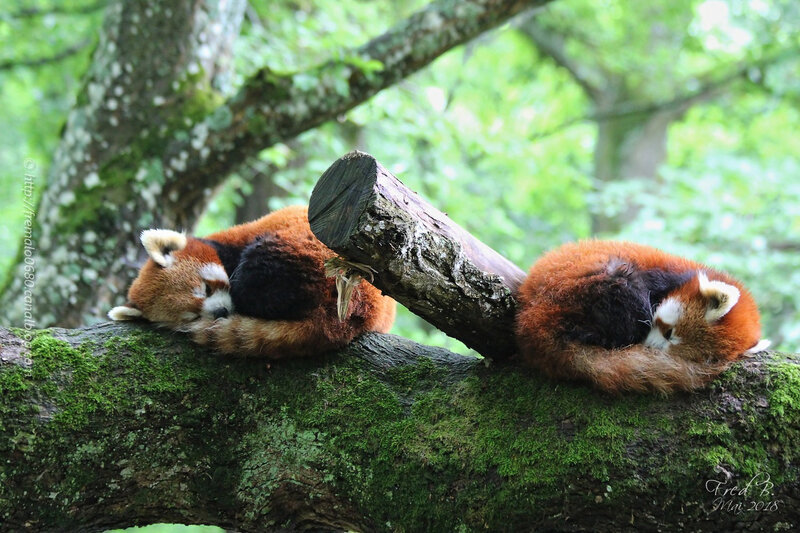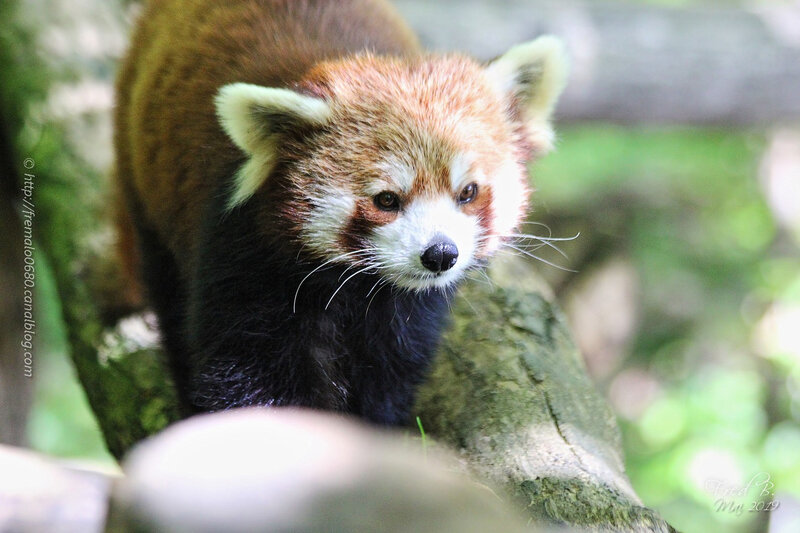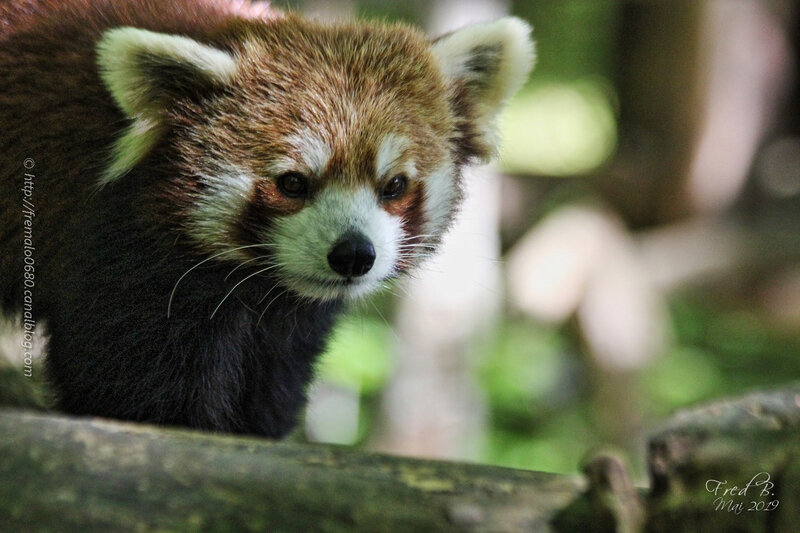Le petit panda ou panda roux (Ailurus fulgens) est un mammifère carnivore alors que son régime alimentaire est omnivore et essentiellement végétarien (bambou, glands, champignons, baies, fruits, écorces, quelques insectes ou rongeurs à l'occasion). On l'a classé dans les mammifères carnivores à cause de son système digestif, semblable à celui des carnivores (un unique estomac relié à un tube digestif plutôt court et dépourvu de caecum).
Il fut un temps classé dans les Procyonidés comme le raton laveur, puis dans les Ursidés comme l'ours mais il a bien fallut accepter qu'il était en fait l'unique représentant de sa famille et c'est ainsi qu'est née la famille des Ailuridés.
Aujourd'hui le panda roux est en grand danger. Le braconnage car internet en a fait un NAC (nouveaux animaux de compagnie) fort recherché, la disparition de son habitat naturel au profit d'une agriculture peu raisonnée, font que l'IUCN l'a classé "en danger". Pour la CITES/Europe il est en Annexe IA.
The
red panda (Ailurus fulgens) is a carnivorous mammal while its diet is
omnivorous and essentially vegetarian (bamboo, acorns, mushrooms,
berries, fruits, barks, some insects or rodents occasionally). It has
been classified in carnivorous mammals because of its digestive system,
similar to that of carnivores (a single stomach connected to a rather
short digestive tract and devoid of cecum).
He
was once classified in the Procyonids as the raccoon, then in the
Ursidae as the bear but we had to accept that he was in fact the only
representative of his family and that's how was born the family of
Ailuridae.
Today
the red panda is in great danger. Poaching because the internet has
made a NAC (new pets) much sought after, the disappearance of its
natural habitat for the benefit of an unethical agriculture, make that
the IUCN classified "endangered". For CITES / Europe he is in Appendix
IA.
Moselle, mai 2018 - mai 2019








Aucun commentaire:
Enregistrer un commentaire